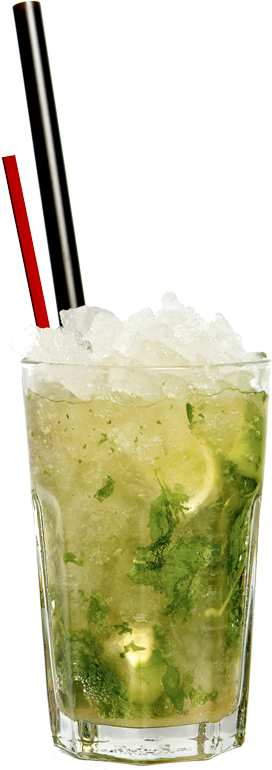

"My Mojito in La Bodeguita.
My Daiquira in El Floridita."
Ernest Heminway

At the beginning of the 18th Century, people began talking about nectar fermentation, which according to the chronicle goes some way to explain “the strange conduct and behaviour of people; just like firewater,” which followed.
At this time, father Jean-Batiste Labat, a great traveller and the inventor of vinegar distillation, observed how “savages of the black race” refined a strong, cheap and sharp drink made from the juice of sugar cane. They called it Tafia: a strong, coarse and inexpensive liquor which offered people a chance to escape the harsh reality of every day life in stark contrast to their age-old rituals. According to the journalist G. Campoamor this “legacy” had been passed down from generation to generation. As a forerunner to rum (a drink made from sugar cane), it gave warriors the courage required in battle, while it offered everyone else the stamina of a horse to perform during regular bacchanalia and orgies. The drink also doubled up as a kind of ointment to treat wounds and soothe headaches.
As regards expansion, Hawkins, David Morgen and Drake, who transported the spirit across the Antillean Sea, were largely responsible for its arrival in Europe.
30 years later, Sir Francis Drake was to cause complete havoc in the Caribbean just after the Queen of Great Britain had presented him with knighthood. Upon his return from a world round trip, he hid valuable treasures somewhere in the regions, never to return.
According to research, carried out by the historian Fernand G. Campoamor, as an accompaniment to his adventures, Drake would always carry some spirit and lemon medicine to fight off scurvy. From this combination, he managed to muster up a winning cocktail recipe, well suited to the mixed hot Cuban climate and ideal for many a celebration and fiesta – as such it remained a great favourite until the end of the 19th century.
The origin of the word cocktail derives from the individual words “cock” and “tail” which according to Hector Zumbad, covered hypotheses, preconditions, assumptions, fantasies and legends.
If we are to believe the historians, English sailors used to drink a shocking mix of different types of rum, wine and liquor, which they referred to as Dracs (pronounced Drakes to mimic the accent of an English sailor) in memory of Francis Drake.
In his novel, Cholera in Havana, set in 19th century colonial times, Ramon Palma speaks through the mouth piece of his main character when he says: “ I always have my dracs at eleven o’clock in the morning, putting me in fine form for the day ahead.”
This of course all came before the famous mojito, by which time rum had gradually started to replace the spirit. From 1910, the explorer, Miguel Boneras begins to talk of the mixed mojito, although it does not feature in the book of cocktail recipes published in 1927. Alas, the drink made its triumphant début in La Bodeguita del Medio.
“I brought the mojito to Bodeguita” says Angel Martinez, “going on to gain ever more respect and international acclaim.”
As to the origin of the name mojito, this remains unclear. Many would say it emerged from a collective source of human wisdom while it may also be traced back to the Cuban tradition of cooling drinks in water. The name mojito is also given to a kind of meat dressing (made from pork dripping and the juices of wild oranges and garlic).